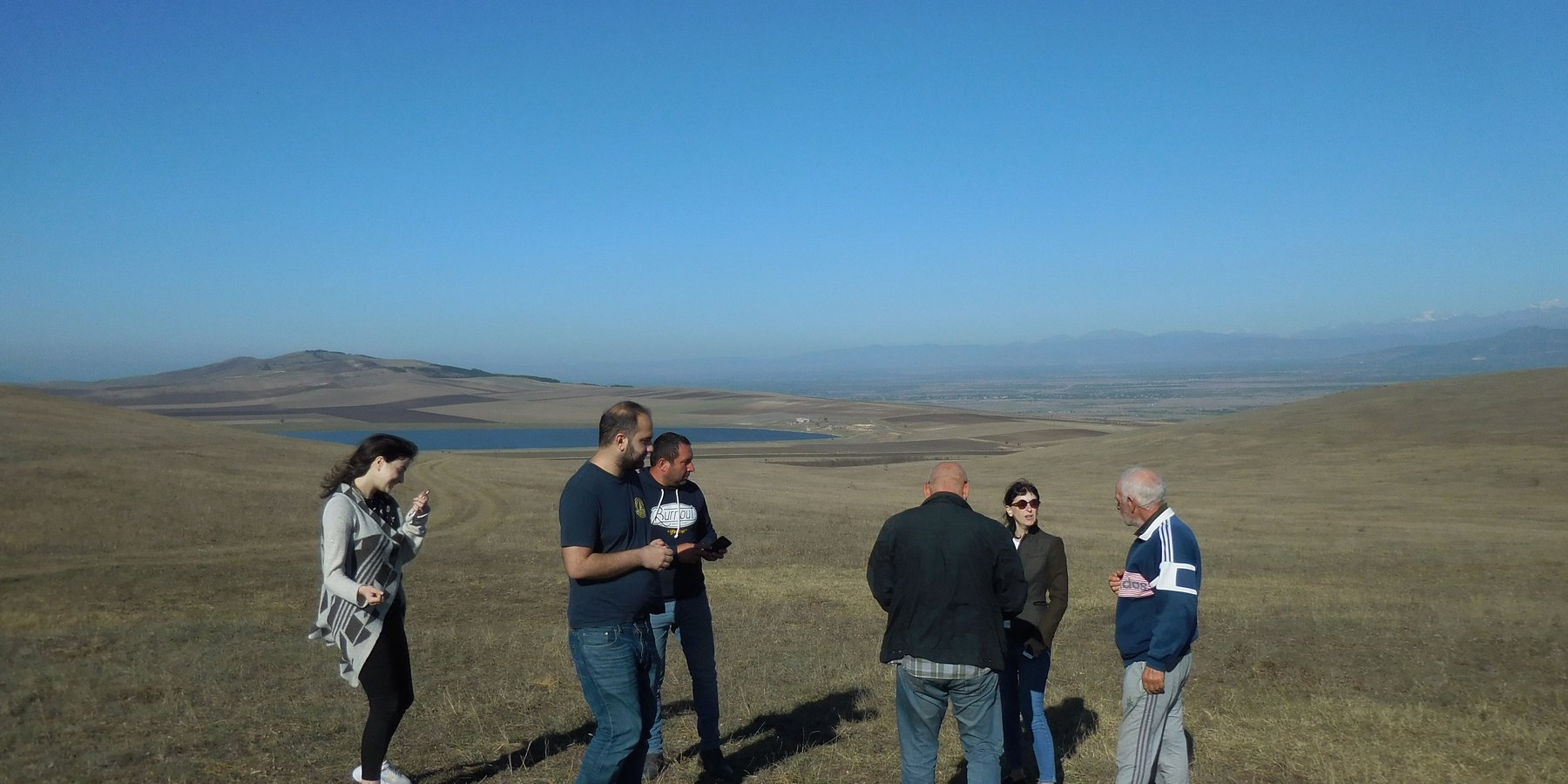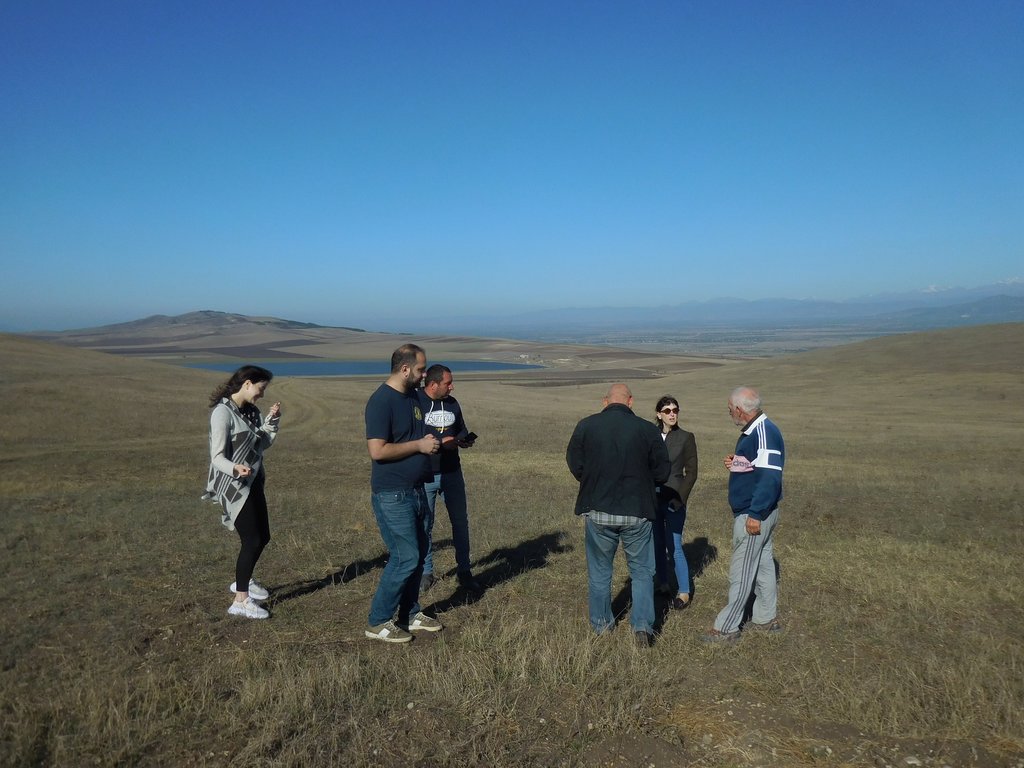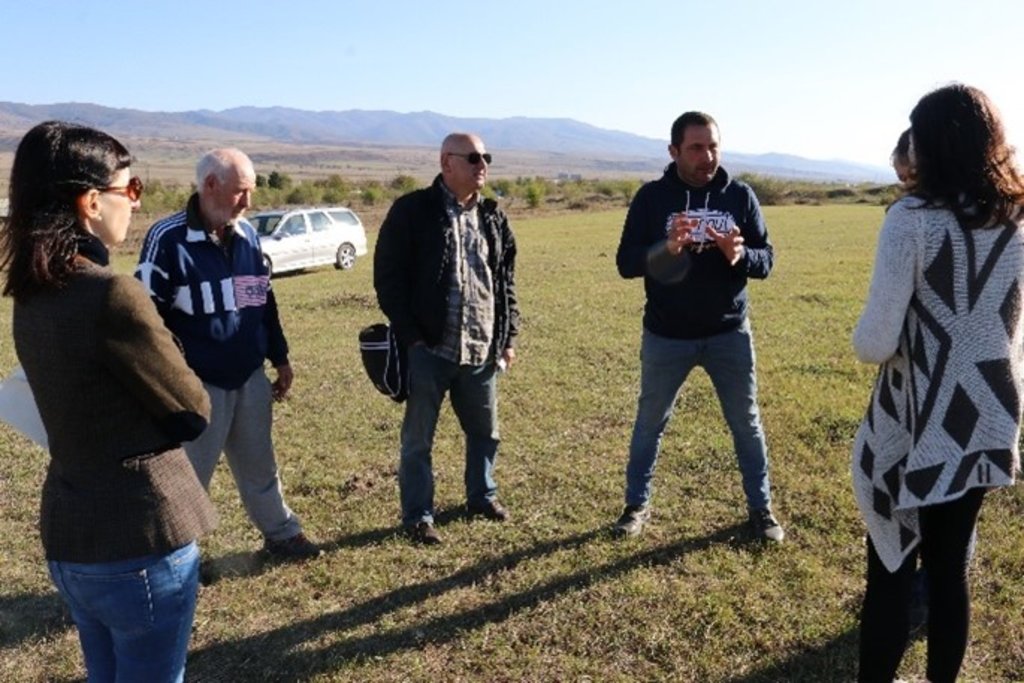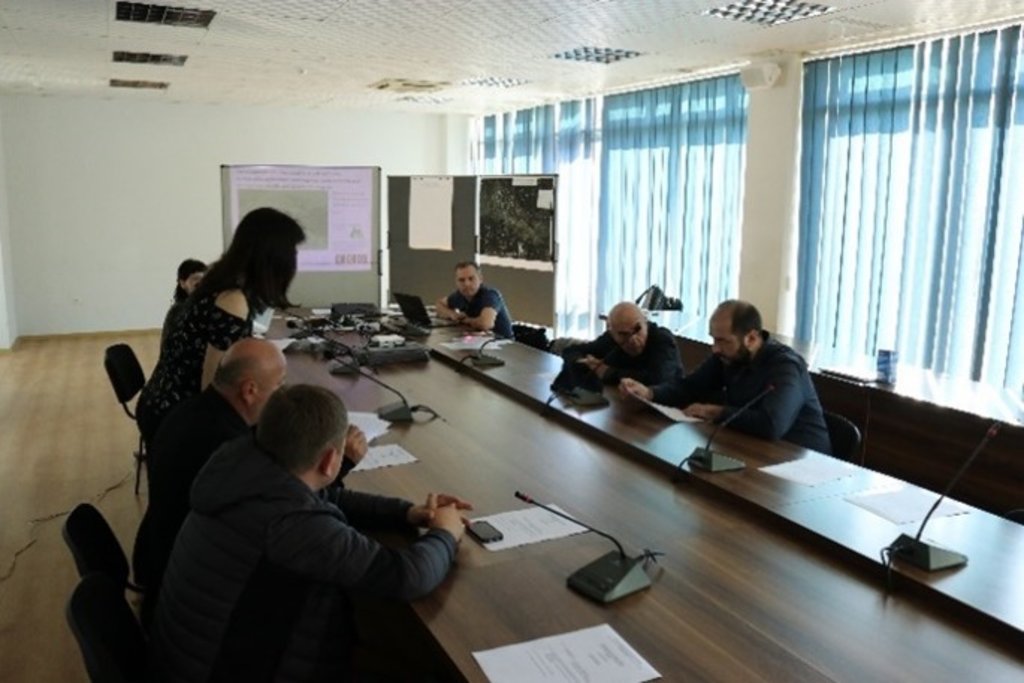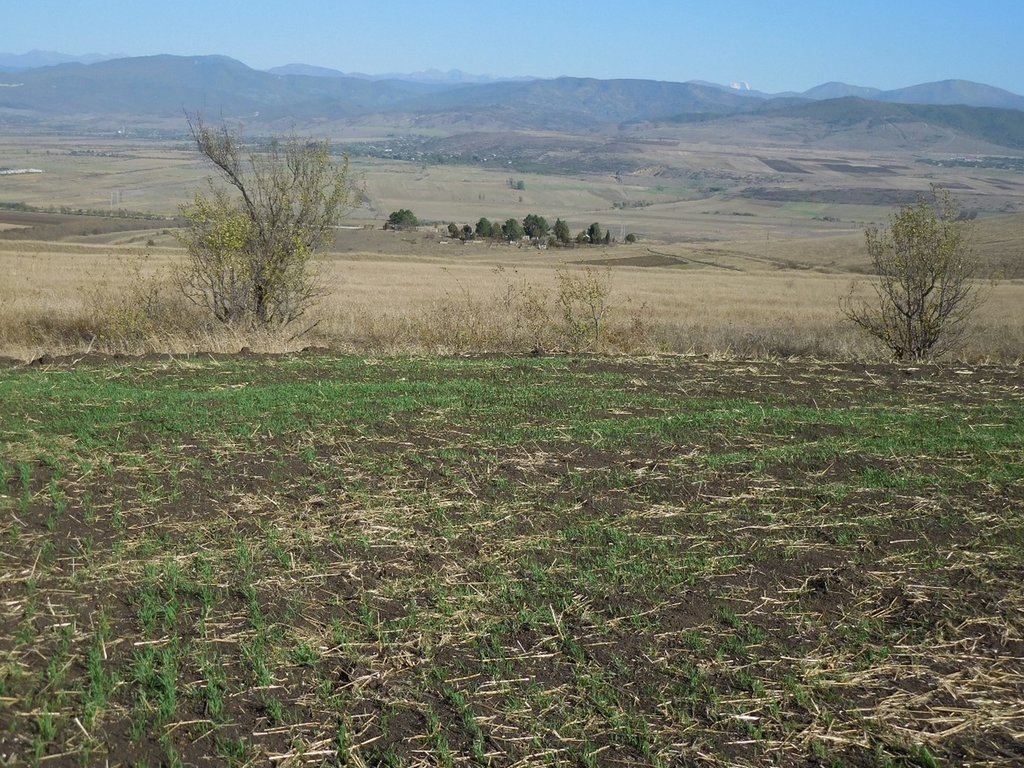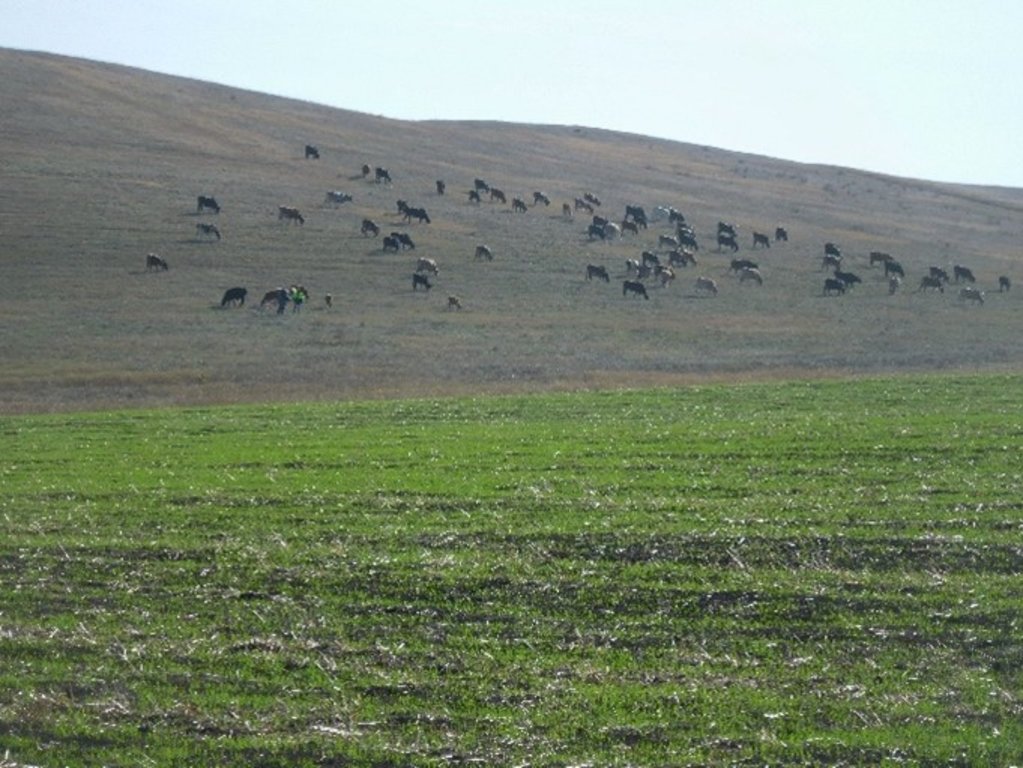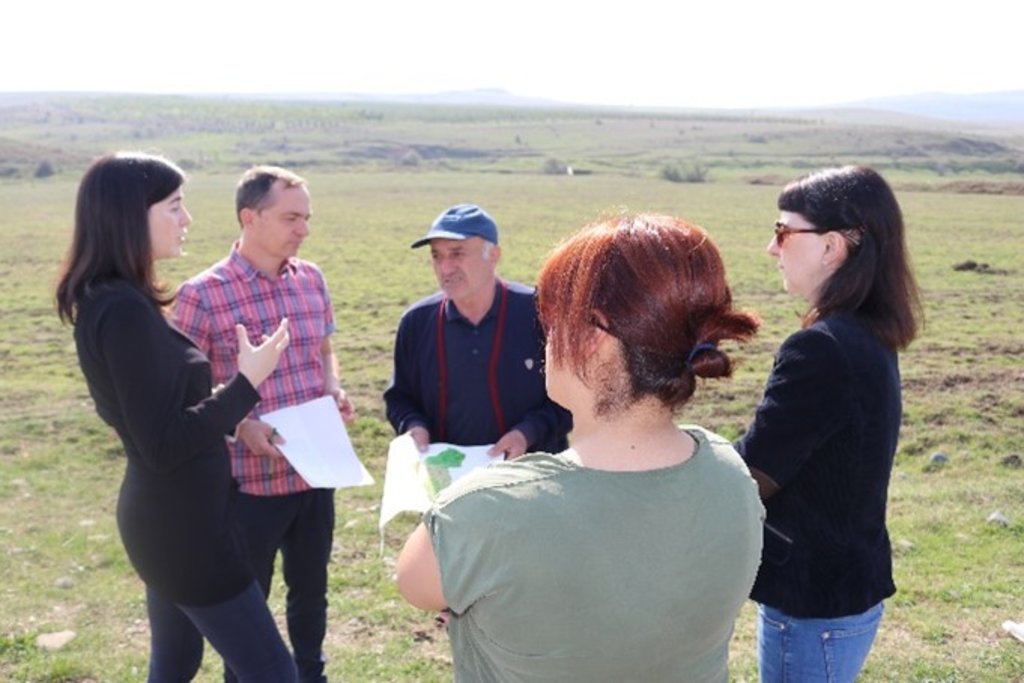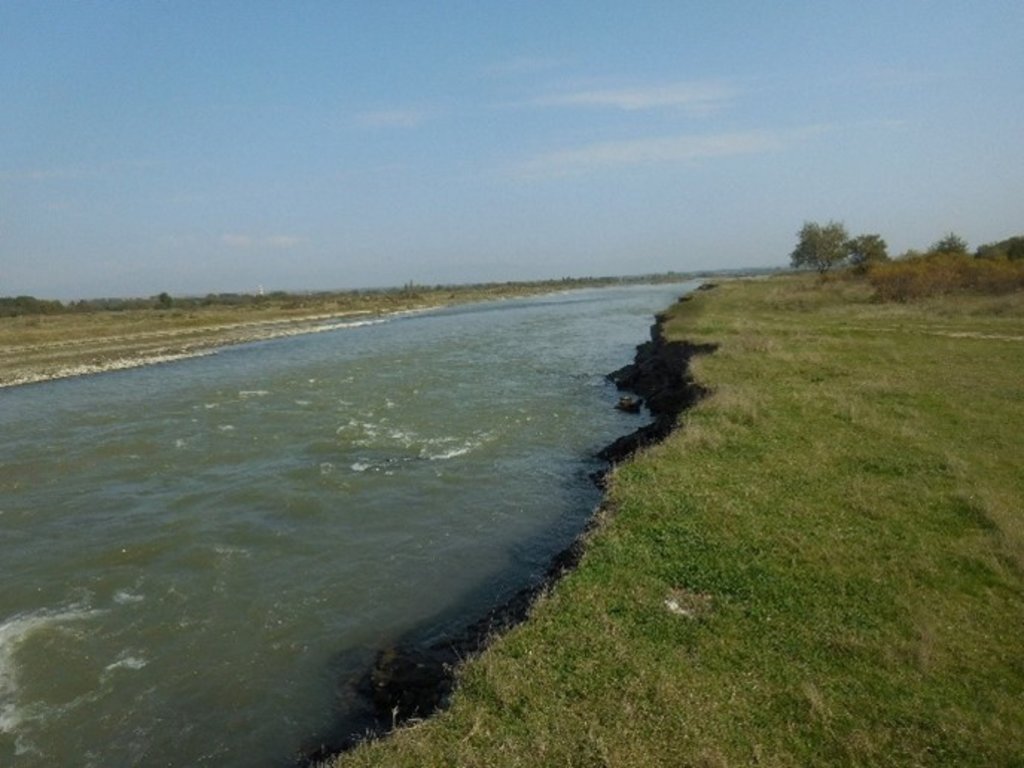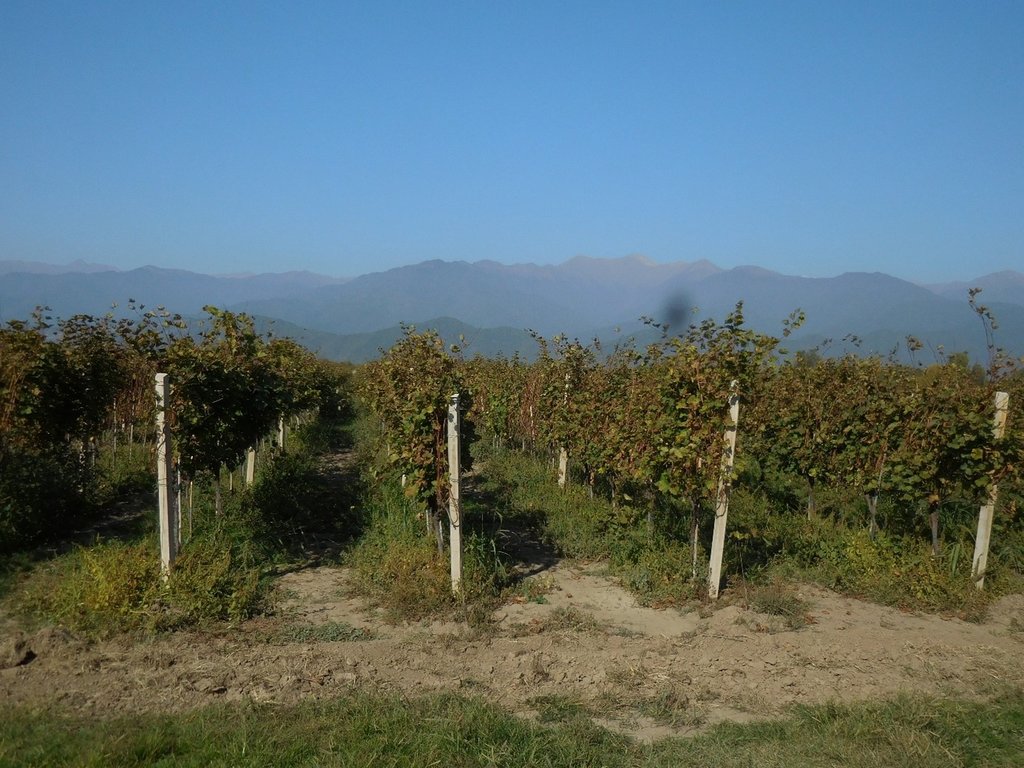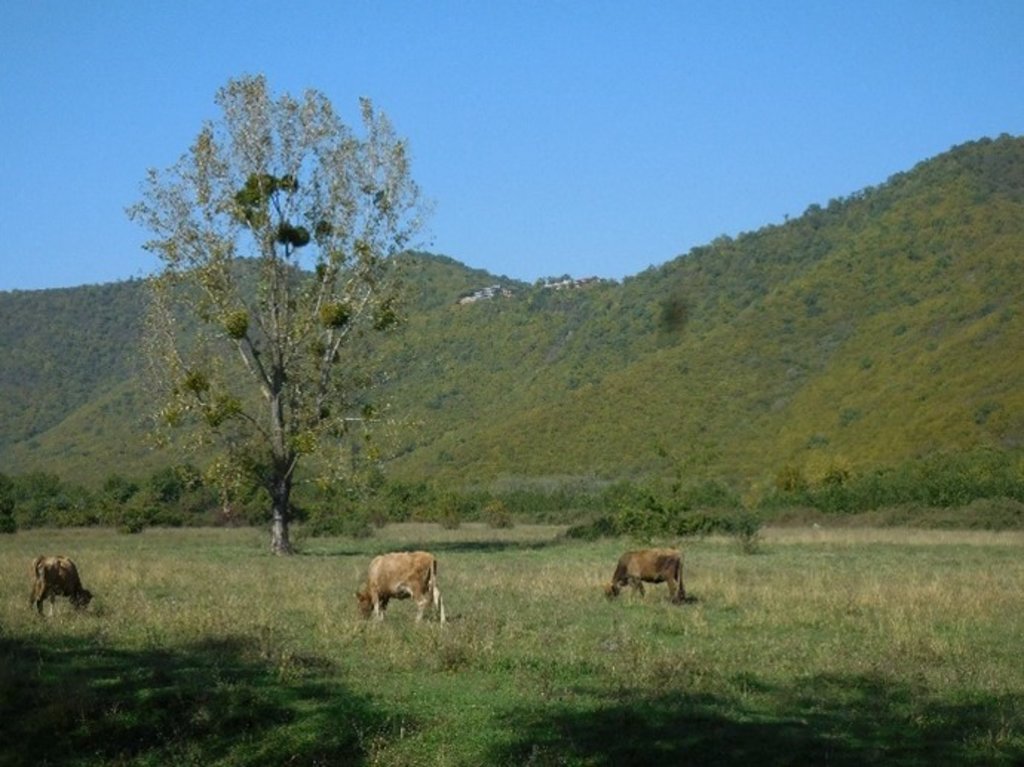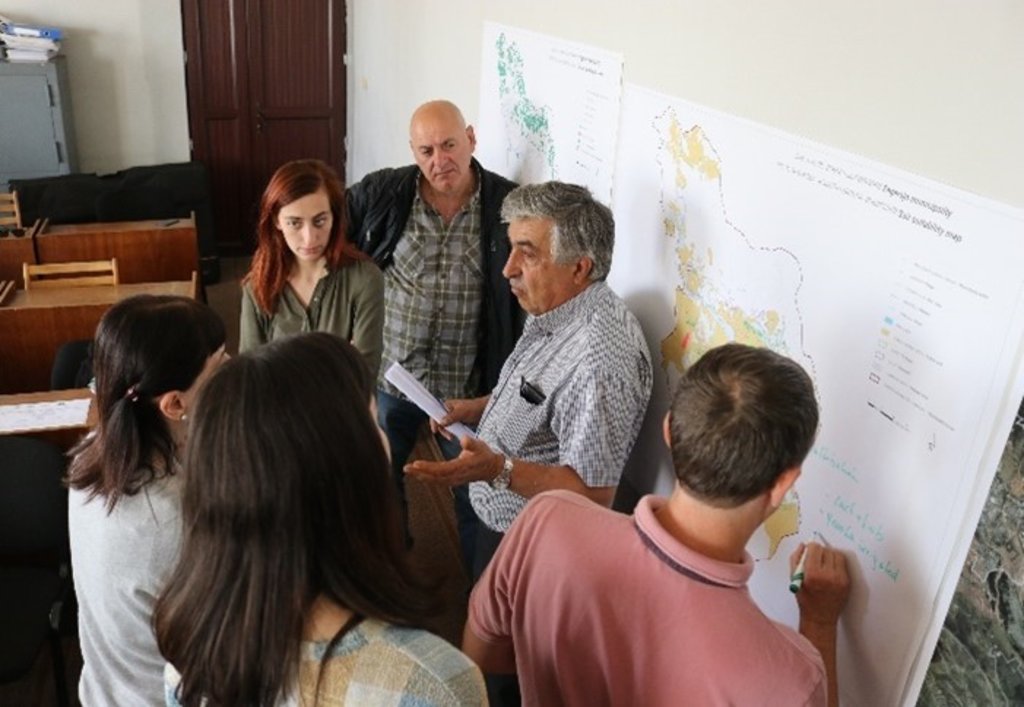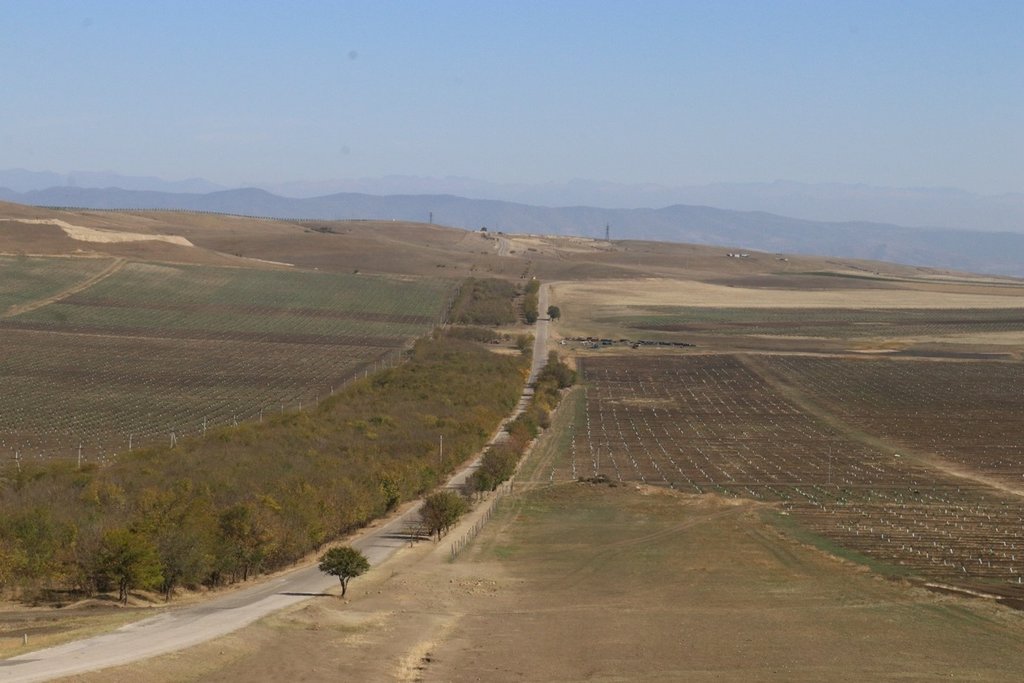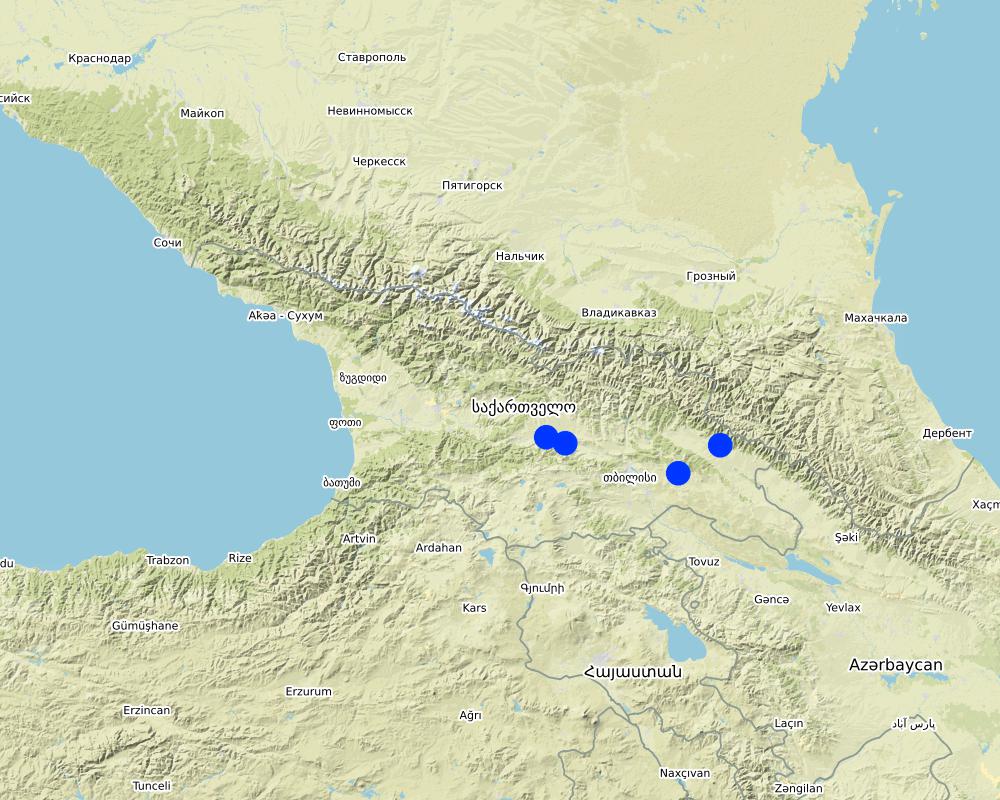Integrated Land Use Plans for Municipalities in Georgia [جورجيا]
- تاريخ الإنشاء:
- تحديث:
- جامع المعلومات: Daniel Zollner
- المحررون: Anneliese Fuchs, Michael Huber
- المراجعون: William Critchley, Rima Mekdaschi Studer
Integrated Land Use Plans for Georgia
approaches_5897 - جورجيا
عرض الأقسام
توسيع الكل طي الكل1. معلومات عامة
1.2 تفاصيل الاتصال بالأشخاص الرئيسيين لمصدر المعلومات والمؤسسات المعنية بتقييم وتوثيق النهج
متخصص في الإدارة المستدامة للأراضي:
Zumbulidze Maia
REC Caucasus
13, Badri Shoshitaishvili Street D. Arakishvili 1st dead-end 0179 Tbilisi, Georgia
جورجيا
متخصص في الإدارة المستدامة للأراضي:
متخصص في الإدارة المستدامة للأراضي:
متخصص في الإدارة المستدامة للأراضي:
اسم المشروع الذي سهّل توثيق/تقييم النهج (إذا كان ذلك على صلة)
Generating Economic and Environmental Benefits from Sustainable Land Management for Vulnerable Rural Communities of Georgia (GREENLANDS)اسم المؤسسة (المؤسسات) التي سهلت توثيق/تقييم النهج (إذا كان ذلك على صلة)
Global Environment Facility Georgia (GEF Georgia) - جورجيا1.3 الشروط المتعلقة باستخدام البيانات الموثقة من خلال WOCAT
متى تم تجميع البيانات (ميدانيا)؟:
14/11/2019
يوافق جامع المعلومات والشخص (لاشخاص) الرئيسي لمصدر المعلومات على الشروط المتعلقة باستخدام البيانات الموثقة من خلال WOCAT:
نعم
2. وصف نهج الإدارة المستدامة للأراضي
2.1 وصف موجز للنهج
Under the framework of the project ‘Generating Economic and Environmental Benefits from Sustainable Land Management for Vulnerable Rural Communities of Georgia’, four Integrated Land Use Plans (ILUPs) were developed to support sustainable agriculture and rural development in the Georgian municipalities of Gori, Kareli, Kvareli and Sagarejo. The objective of the ILUPs is to provide strategic guidelines for decision makers and authorities for the spatial development of agriculture at the landscape unit level over the period of 2021 to 2030.
2.2 وصف تفصيلي للنهج
وصف تفصيلي للنهج:
The project ‘Generating Economic and Environmental Benefits from Sustainable Land Management for Vulnerable Rural Communities of Georgia’, financed by the Global Environment Facility (GEF) and implemented by the Regional Environmental Center (REC) for the Caucasus, aims to develop new sustainable land management (SLM) systems at both the commune and farmer plot levels, that integrate climate-smart agricultural production, food security and resilience and thereby contribute to Georgia’s objectives for Land Degradation Neutrality.
This WOCAT-based approach describes the development of four Integrated Land Use Plans (ILUPs) for sustainable agriculture and rural development in the municipalities of Gori, Kareli, Kvareli and Sagarejo (each 1000-2500km2).
The objective of the ILUPs is to provide strategic guidelines for decision makers and authorities for the spatial development of agriculture in the four municipalities for the period from 2021 to 2030 at the landscape level. This takes into consideration the balance of nature and human needs, and integrates different sectors and perspectives in the plan. This is to create synergies on the one hand, and to avoid conflicting goals on the other. Special attention is paid to the complex interactions between agriculture, climate change and land degradation. Thus, the ILUPs aim to develop and strengthen Sustainable Land Management (SLM) practices, Climate Smart Agriculture (CSA) and Land Degradation Neutrality (LDN) and to provide different options for further development. Above all, the plans aim to bring together relevant aspects from existing strategies and policies with local needs and ideas and link them at the spatial level as far as possible.
The ILUP project was implemented between the years 2019 and 2021. The development of the plan needs different approaches and methods - including literature research, statistical data evaluation, field mission, GIS analysis, and suitability assessment. With inception and field visits, workshops with the municipal LDN working group, interviews with farmers, and analyses of different base maps, the land use, the suitability for their development options, and the degradation risks of the area were identified and reflected step by step. The intersection and aggregation of the data led to the definition of the following main basic functional units:
- High Production Value (HPV) Farmland (for perennials, annual cropland and grassland)
- High Nature Value (HNV) Farmland
- High Social Value (HSV) Farmland and, as a specific output,
- Hot Spots of degradation (water erosion, wind erosion, and salinization).
The results were documented in a sectoral, technical plan for each municipality. The ILUP is intended to serve as a basis for further planning, capacity building and decision making procedures within the framework of legal responsibilities and requirements (e. g. for the municipal spatial plan). A second document (also recorded under WOCAT) is based on the outcome of this showcase and predominantly focuses on LDN implementation options by the application and adoption of various SLM and CSA practices.
2.3 صور عن النهج
2.5 البلد/المنطقة/المواقع التي تم تطبيق النهج فيها
البلد:
جورجيا
المنطقة/الولاية/المحافظة:
Shida Kartli and Kakheti
مزيد من التفاصيل حول الموقع:
Gori, Kareli, Kvareli, Sagarejo
التعليقات:
The points are located within the four municipalities of Gori, Kareli, Kvareli and Sagarejo. The land use plan was prepared for the entire territory of the four municipalities.
Map
×2.6 تواريخ بدء وإنهاء تنفيذ النهج
أشر إلى سنة البدء:
2019
سنة الإنهاء (إذا لم يعد النهج مطبقًا):
2021
التعليقات:
ILUPs as basic planning documents were finished in June 2021. However, there is a next phase needed in order to include local stakeholders, national experts and farmers more intensively for implementation on plot level.
2.7 نوع النهج
- قائم على مشروع/برنامج
2.8 الغايات/الأهداف الرئيسية للنهج
The objective of the ILUPs is to provide strategic guidelines for decision makers and authorities for the spatial development of sustainable agriculture in the four municipalities for the period from 2021 to 2030 at the landscape level. It takes into consideration the balance of nature and human needs and integrates different sectors and perspectives in the plan. This is to create synergies on the one hand and to avoid conflicting goals on the other.
2.9 الظروف التي تمكن أو تعيق تنفيذ التقنية/التقنيات المطبقة بموجب النهج
المعايير والقيم الاجتماعية /الثقافية/ الدينية
- تمكين/تمكيني
basically, awareness of the necessity to use the land in a sustainable manner exists
- معيق
historically conditioned reservation
توفر/الوصول إلى الموارد والخدمات المالية
- تمكين/تمكيني
a few international financing tools are existing (GEF, GCF, etc)
- معيق
holistic, transsectoral, and adaptive financing mechanisms restricted
الإطار المؤسساتي
- تمكين/تمكيني
agricultural experts at the local level
- معيق
lack of education possibilities
التعاون/التنسيق بين الجهات الفاعلة
- تمكين/تمكيني
- permanent working groups existing (LDN working groups, ministerial working groups etc.)
- active actors in the region
- معيق
continuing lack of cooperation
الإطار القانوني (حيازة الأراضي، وحقوق استخدام الأراضي والمياه)
- تمكين/تمكيني
legal framework has been established recently
- معيق
lack of land registration
السياسات
- تمكين/تمكيني
abundant framework documents existing
- معيق
implementation of the policies is the challenge
حوكمة الأراضي (صنع القرار والتنفيذ والإنفاذ)
- تمكين/تمكيني
recently re-structured administrative entities (is a potential in the long run)
- معيق
recently re-structured administrative entities (phase of change)
المعرفة حول الإدارة المستدامة للأراضي، والوصول إلى الدعم الفني
- تمكين/تمكيني
national service provider existing
- معيق
lack of knowldege and capacity
الأسواق (لشراء المدخلات وبيع المنتجات) والأسعار
- تمكين/تمكيني
adjacent urban areas
- معيق
- high economic pressure on the world market
- low income level in the regions
عبء العمل، توفر القوى العاملة
- معيق
demographic change
3. المشاركة وأدوار الأطراف المعنية
3.1 أصحاب المصلحة المعنيون بالنهج وأدوارهم
- مستخدمو الأراضي المحليون/المجتمعات المحلية
various farmers
visits to the fields with the local farmers, discussions about the type of cultivation, specific needs and ideas
- الباحثون
Tbilisi State University
Scientific expertise on land use and soil productivity
- منظمة غير حكومية
REC Caucasus
Supervisors, consultants, GIS analyses, participation in the LDN Working Group Meeting
- الحكومة المحلية
- Executive Office of the Gori Municipal Council
- City Hall (formerly Municipal Administration“Gamgeoba”), Municipality of Gori
- City Hall (formerly Municipal Administration“Gamgeoba”), Municipality of Kareli
- City Hall (formerly Municipal Administration“Gamgeoba”), Municipality of Kvareli
- City Hall (formerly Municipal Administration“Gamgeoba”), Municipality of Sagarejo
Participation in the LDN Working Group Meeting
- الحكومة الوطنية (المخططون، صانعو القرار)
- Ministry of Environmental Protection and Agriculture of Georgia (MEPA)
- Agricultural and Rural Development Agency (ARDA)
Participation in the LDN Working Group Meeting, process steering and embedment into national policies
- منظمة دولية
UNEP
Steering of the whole GEF project (with the ILUPs as one component of it)
3.2 انخراط مستخدمي الأراضي المحليين/المجتمعات المحلية في المراحل المختلفة للنهج
| انخراط مستخدمي الأراضي المحليين/المجتمعات المحلية | حدد من شارك وصف الأنشطة | |
|---|---|---|
| المبادرة/التحفيز | غير موجود | |
| التخطيط | سلبي | Local land users were consulted to gain experience and insight into the situation of agriculture in the different areas. The interviews were then incorporated into the preparation of the maps and land use plans. |
| التنفيذ | تفاعلي | - during the inception mission - in the course of the interactive ILUP workshops |
| الرصد/التقييم | الدعم الخارجي | - supervision and critical reflection by experts and the client - presentation and reflection at the GEF project steering commitee meeting (about 30 persons - decision makers from different policy levels, national and international experts, project manager etc.) |
3.4 اتخاذ القرار بشأن اختيار تقنية/تقنيات الإدارة المستدامة للأراضي
حدد من الذي قرر اختيار التقنية/التقنيات التي سيتم تنفيذها:
- متخصصون في الإدارة المستدامة للأراضي بشكل أساسي، بعد التشاور مع مستخدمي الأراضي
اشرح:
The ILUP provides several options to use SLM technologies: the final decision will take place in a next step. Some specific technologies and actions (no-tillage, windbreaks..) are currently implemented.
4. الدعم الفني وبناء القدرات وإدارة المعرفة
4.1 بناء القدرات/التدريب
هل تم تقديم التدريب لمستخدمي الأراضي / الأطراف المعنيين الآخرين؟:
كلا
4.2 خدمة استشارية
هل يملك مستخدمو الأراضي وصولا إلى خدمة استشارية؟:
كلا
4.3 تعزيز المؤسسات (التطوير التنظيمي)
هل تم إنشاء أو تعزيز مؤسسات من خلال هذا النهج؟:
- نعم، باعتدال
حدد المستوى (المستويات) التي تم فيها تعزيز أو إنشاء المؤسسات:
- محلي
صف المؤسسة والأدوار والمسؤوليات والأعضاء وما إلى ذلك.
Representatives of the municipalities - regional expertise, practical implementation, embedded into local policies.
حدد نوع الدعم:
- بناء القدرات/التدريب
اعط مزيدا من التفاصيل:
Discussions and workshops to contribute to a better common understanding and transsectoral learning from each other.
4.4 الرصد والتقييم
هل يشكل الرصد والتقييم جزءا من النهج؟:
كلا
4.5 البحوث
هل كانت البحوث جزءًا من النهج؟:
كلا
5. التمويل والدعم المادي الخارجي
5.1 الميزانية السنوية لمكون الإدارة المستدامة للأراضي في النهج المذكور
إذا لم تكن الميزانية السنوية الدقيقة معروفة، قم بالإشارة إلى نطاقها:
- 100,000-10,000
التعليقات (على سبيل المثال المصادر الرئيسية للتمويل/الجهات المانحة الرئيسية):
Global Environmental Facility (GEF), in the frame of the project: Generating Economic and Environmental Benefits from Sustainable Land Management for Vulnerable Rural Communities of Georgia
5.2 الدعم المالي/المادي المقدم لمستخدمي الأراضي
هل حصل مستخدمو الأراضي على دعم مالي/ مادي لتنفيذ التقنية/ التقنيات؟:
نعم
إذا كانت الإجابة بنعم، حدد نوع (أنواع) الدعم والشروط والمزودين:
Different sources and options of support are recommended in the ILUPS, but needs to be decided.
5.4 الائتمان
هل تم توفير ائتمان في إطار نهج أنشطة الإدارة المستدامة للأراضي؟:
كلا
5.5 حوافز أو وسائل أخرى
هل تم استخدام حوافز أو أدوات أخرى لتشجيع تنفيذ تقنيات الإدارة المستدامة للأراضي؟:
كلا
6. تحليل الأثر والتصريحات الختامية
6.1 آثار النهج
هل ساهم النهج في تمكين مستخدمي الأراضي المحليين وتحسين مشاركة الأطراف المعنية؟:
- لا
- نعم، قليلا
- نعم، باعتدال
- نعم، إلى حد كبير
- integration of local decision maker was core part of the planning procedure - more empowerment of land users planned for the detailed planning phase
هل ساعد النهج مستخدمي الأراضي على تنفيذ وصيانة تقنيات الإدارة المستدامة للأراضي؟:
- لا
- نعم، قليلا
- نعم، باعتدال
- نعم، إلى حد كبير
The ILUP is designed to be the fundamental basis for any kind of SLM technologies
هل نجح النهج في تحسين التنسيق والتنفيذ الفعال من حيث التكلفة لأنشطة الإدارة المستدامة للأراضي؟:
- لا
- نعم، قليلا
- نعم، باعتدال
- نعم، إلى حد كبير
The whole plan is dedicated to coordinate approaches and implementations
هل أدى النهج إلى تحسين معرفة وقدرات مستخدمي الأراضي على تنفيذ الإدارة المستدامة للأراضي؟:
- لا
- نعم، قليلا
- نعم، باعتدال
- نعم، إلى حد كبير
Little in the process of elaboration, but will improve significantly in the course of implementation
هل أدى النهج إلى تحسين معرفة وقدرات الأطراف المعنية الأخرى؟:
- لا
- نعم، قليلا
- نعم، باعتدال
- نعم، إلى حد كبير
Little in the process of elaboration, but will improve significantly in the course of implementation
هل ساهم النهج في التخفيف من حدة الصراعات؟:
- لا
- نعم، قليلا
- نعم، باعتدال
- نعم، إلى حد كبير
The whole plan is designed to mitigate land use conflicts
هل ساهم النهج في تمكين الفئات المحرومة اجتماعيا واقتصاديا؟:
- لا
- نعم، قليلا
- نعم، باعتدال
- نعم، إلى حد كبير
A large proportion of the approach is dedicated to small farmers
هل أدى النهج إلى تحسين المساواة بين الجنسين وتمكين النساء والفتيات؟:
- لا
- نعم، قليلا
- نعم، باعتدال
- نعم، إلى حد كبير
The gender aspect is integrated into the plan, but needs implementation
هل أدى النهج إلى تحسن في مسائل حيازة الأراضي / حقوق المستخدمين التي أعاقت تنفيذ تقنيات الإدارة المستدامة للأراضي؟:
- لا
- نعم، قليلا
- نعم، باعتدال
- نعم، إلى حد كبير
The approach underlined the necessity of land registration
The plan is designed to improve food security
The plan is designed to improve the development of new markets resp. the access of existing markets
هل أدى النهج إلى استخدام طاقة/ مصادر طاقة أكثر استدامة؟:
- لا
- نعم، قليلا
- نعم، باعتدال
- نعم، إلى حد كبير
Some components are dealing with energy topics.
هل أدى النهج إلى تحسين قدرة مستخدمي الأراضي على التكيف مع التغيرات المناخية/الظواهر المناخية المتطرفة والتخفيف من الكوارث المرتبطة بالمناخ؟:
- لا
- نعم، قليلا
- نعم، باعتدال
- نعم، إلى حد كبير
Little in the process of elaboration, but will improve significantly in the course of implementation
هل أدى النهج إلى توفير فرص عمل ودخل؟:
- لا
- نعم، قليلا
- نعم، باعتدال
- نعم، إلى حد كبير
Little in the process of elaboration, but should improve significantly in the course of implementation
6.2 المحفز الرئيسي لقيام مستخدمي الأراضي بتنفيذ الإدارة المستدامة للأراضي
- زيادة الإنتاج
- زيادة الربح (القدرة)، وتحسين نسبة التكلفة إلى العائد
- الحد من تدهور الأراضي
- الحد من مخاطر الكوارث
- الوعي البيئي
- تعزيز المعرفة والمهارات في مجال الإدارة المستدامة للأراضي
- التخفيف من حدة الصراع
6.3 استدامة أنشطة النهج
هل يمكن لمستخدمي الأراضي المحافظة على استدامة ما تم تنفيذه من خلال النهج (بدون دعم خارجي)؟:
- لا
إذا كان الجواب لا أو غير متأكد، حدد ذلك وعلق عليه:
The approach needs embedding into local governance structures
6.4 نقاط قوة/مزايا النهج
| نقاط القوة/ المزايا/ الفرص من وجهة نظر مستخدمي الأراضي |
|---|
| clear overview of land suitability |
| diversification options |
| set of proposed measures and actions |
| نقاط القوة/ المزايا/ الفرص من وجهة نظر جامع المعلومات أو غيره من الاشخاص الرئيسيين لمصدر المعلومات |
|---|
| fundamental for strategic and coordinated development, practical framework for implementation |
| stringent target system, compiled at different levels |
| integrated development approach, combining all dimensions of sustainability |
| core tool to adapt to and mitigate climate change |
6.5 نقاط الضعف/ العيوب في المنهج وطرق التغلب عليها
| نقاط الضعف/ المساوىء/ المخاطر من وجهة نظر مستخدم الأراضي | كيف يمكن التغلب عليها؟ |
|---|---|
| plan might raise expectations and an "atmosphere of departure", that cannot be fullfilled in due time |
- consistent and timely implementation of proposed measures - acquisition of financial resources - strengthening local structures and participation |
| plan will not enter next phases, thus implementation might get stuck and/or will not meet the needs on plot level fully | Consistent and timely implementation of the proposed next steps (review process, detailed planning, embedding into municipal land use planning system) |
| نقاط الضعف/ المساوىء/ المخاطر من وجهة نظر جامع المعلومات أو غيره من الاشخاص الرئيسيين لمصدر المعلومات | كيف يمكن التغلب عليها؟ |
|---|---|
| Risk that further planning process gets stuck and/or lacks participation |
- intensive land user involvement - cross-sectoral participation - detailed (process) planning (at plot level) |
| Risk of weak implementation because of lack of framework conditions |
- further land registration needed - detailed planning needed (next phase) - according financing mechanisms needed - embedding into communal planning environment |
7. المراجع والروابط
7.1 طرق جمع/مصادر المعلومات
- زيارات ميدانية، مسوحات ميدانية
4 local workshops
- مقابلات مع مستخدمي الأراضي
about 5 interviews
- مقابلات مع المتخصصين/الخبراء في الإدارة المستدامة للأراضي
- one scientific expert
- several representatives from the steering commitee of the project
- التجميع من التقارير والوثائق الأخرى الموجودة
About 50 reports and documents
7.2 المراجع للمنشورات المتاحة
العنوان، المؤلف، السنة، النظام القياسي الدولي لترقيم الكتب ISBN:
Zollner, D., Zumbulidze, M., Kirchmeir, H., Fuchs, A. und Huber, M. 2021: Gori Integrated Land Use Plan (ILUP Gori) for sustainable agriculture and rural development with special emphasis on SLM, CSA and LDN. Part A – ILUP Gori. Version 2.0. Klagenfurt, Tbilisi, Gori. 80 p. + documentation volume/ annex.
متاح من أين؟كم التكلفة؟:
REC Caucasus, E.C.O- Institute of Ecology
العنوان، المؤلف، السنة، النظام القياسي الدولي لترقيم الكتب ISBN:
Zollner, D., Zumbulidze, M., Kirchmeir, H., Fuchs, A. und Huber, M. 2021: Kareli Integrated Land Use Plan (ILUP Gori) for sustainable agriculture and rural development with special emphasis on SLM, CSA and LDN. Part A – ILUP Gori. Version 2.0. Klagenfurt, Tbilisi, Gori. 80 p. + documentation volume/ annex.
متاح من أين؟كم التكلفة؟:
REC Caucasus, E.C.O- Institute of Ecology
العنوان، المؤلف، السنة، النظام القياسي الدولي لترقيم الكتب ISBN:
Zollner, D., Zumbulidze, M., Kirchmeir, H., Fuchs, A. und Huber, M. 2021: Kvareli Integrated Land Use Plan (ILUP Gori) for sustainable agriculture and rural development with special emphasis on SLM, CSA and LDN. Part A – ILUP Gori. Version 2.0. Klagenfurt, Tbilisi, Gori. 80 p. + documentation volume/ annex.
متاح من أين؟كم التكلفة؟:
REC Caucasus, E.C.O- Institute of Ecology
العنوان، المؤلف، السنة، النظام القياسي الدولي لترقيم الكتب ISBN:
Zollner, D., Zumbulidze, M., Kirchmeir, H., Fuchs, A. und Huber, M. 2021: Sagarejo Integrated Land Use Plan (ILUP Gori) for sustainable agriculture and rural development with special emphasis on SLM, CSA and LDN. Part A – ILUP Gori. Version 2.0. Klagenfurt, Tbilisi, Gori. 80 p. + documentation volume/ annex.
متاح من أين؟كم التكلفة؟:
REC Caucasus, E.C.O- Institute of Ecology
الروابط والوحدات المواضيعية
توسيع الكل طي الكلالروابط
لا يوجد روابط
الوحدات المواضيعية
لا يوجد وحدات مواضيعية


